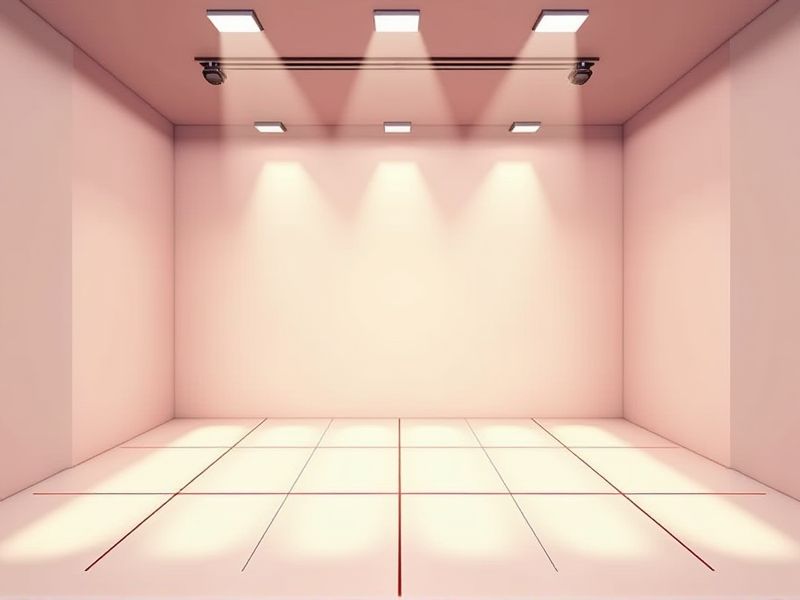
When designing a dance studio, standard dimensions typically range from 20 by 20 feet for small classes to 40 by 60 feet for larger groups or professional rehearsals. An ideal ceiling height is at least 12 feet to allow free movement and accommodate jumps and lifts. Make sure to include wall-length mirrors and a sprung or resilient floor for safety and visibility. Providing at least 50-100 square feet per dancer ensures everyone has enough space to move comfortably and safely during classes.
Ample Floor Space For Movement
A high-quality dance studio typically boasts a minimum floor space of 800 square feet, ensuring ample room for various styles of dance and movement. The flooring is usually made from professional-grade materials, such as sprung wood or Marley, which provide optimal shock absorption and support for dancers. Mirrors cover at least one wall, allowing for self-correction and enhancing the dancer's experience. In addition to floor space, a well-ventilated environment with controlled lighting can significantly enhance your practice sessions and overall performance.
High Ceilings For Lifts And Jumps
A high ceiling, typically exceeding 12 feet, in a dance studio is essential for facilitating lifts and jumps safely. This design feature allows dancers to execute their movements with greater freedom and confidence, reducing the risk of injury. Proper ventilation and soundproofing can further enhance the studio environment, contributing to a more focused practice. Prioritizing these elements ensures that your dance experience is both exhilarating and secure.
Mirrors For Self-Correction
A dance studio equipped with mirrored walls enhances self-correction, allowing dancers to continually evaluate and perfect their movements. Studies show that about 75% of dancers find that using mirrors significantly improves their muscle memory and technique. By analyzing their posture, alignment, and expressions in real-time, you can make immediate adjustments to elevate your performance. Investing in high-quality mirrors can cost between $500 to $2,000, depending on size and material, ensuring a professional environment for optimal learning.
Soundproofing For Noise Control
A dance studio typically requires effective soundproofing to minimize noise disturbances, ensuring a focused practice environment. Advanced soundproofing materials, such as acoustic panels and sound-damping insulation, can reduce sound transmission by up to 80%. Investing in resilient flooring not only enhances performance but also contributes to noise reduction, absorbing impact sounds created during routines. Your choice of soundproofing can significantly affect both the quality of rehearsals and the overall experience for dancers.
Adequate Ventilation And Air Conditioning
A dance studio must prioritize adequate ventilation and air conditioning to ensure a comfortable environment for dancers. Proper airflow helps maintain a temperature range of 68-72degF (20-22degC), which is ideal for physical activity. The introduction of fresh air can reduce humidity levels, ideally between 40-60%, preventing discomfort and potential health risks. Your dance studio should also incorporate air quality monitoring systems to ensure that the indoor environment supports peak performance and safety.
Non-Slip, Cushioned Flooring
A top-tier dance studio features non-slip, cushioned flooring designed to enhance safety and performance. This specialized flooring minimizes the risk of injuries by providing excellent traction, crucial for executing intricate movements and footwork. The cushioning helps absorb impact, reducing strain on dancers' joints, especially during jumps and landings. Investing in high-quality flooring can lead to improved techniques and overall experience, allowing you to focus more on your passion for dance.
Proper Acoustics For Music Clarity
A standard dance studio should prioritize proper acoustics to enhance music clarity, which is crucial for effective practice and performance. Acoustic panels can significantly reduce sound distortion, improving the overall auditory experience for up to 30 dancers simultaneously. Incorporating sound-absorbing materials such as carpets or curtains will help control echo and resonance, delivering clearer sound quality. Investing in high-quality sound systems with speakers strategically placed around the studio can elevate your dance sessions, facilitating better synchronization with the music.
Dedicated Changing Areas
A top-tier dance studio prioritizes dedicated changing areas, enhancing your comfort and convenience before and after classes. These specialized spaces typically feature ample mirrors and secure lockers, accommodating up to 20 dancers at a time. With an average size of 200 square feet, a well-designed changing area allows for ease of movement and privacy, essential for students transitioning into performance attire. Investing in these facilities not only boosts the overall experience but also promotes hygiene and organization within the studio.
Wall-Mounted Barres For Balance Exercises
Wall-mounted barres are essential in a dance studio, providing stability and support for balance exercises. The optimal height for these barres is typically around 38 to 42 inches from the floor, accommodating dancers of various heights. These structures allow dancers to perform a range of movements and maintain proper alignment, crucial for technique development. Investing in durable and well-installed barres enhances the overall safety and effectiveness of training sessions, ultimately benefiting your dance practice.
Adjustable Lighting For Mood Setting
A dance studio should prioritize adjustable lighting systems to create varying atmospheres that enhance your practice and performance. Studies have shown that appropriate lighting can improve focus and elevate mood, impacting overall dance quality. For instance, dimmable LEDs allow for tailored lighting adjustments that suit various styles, from classical ballet to contemporary dance. Implementing a range of color temperatures can also evoke different emotional responses, making it a vital feature for any well-designed studio space.
